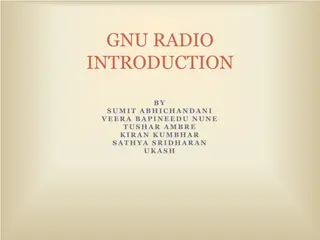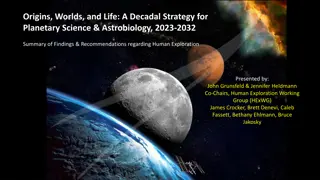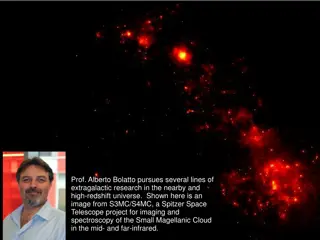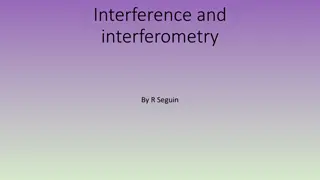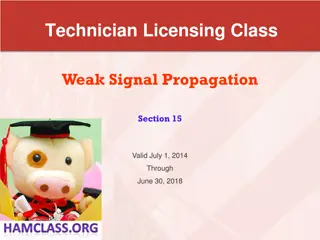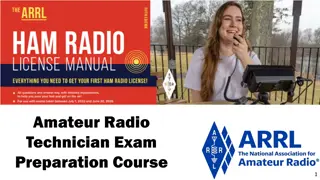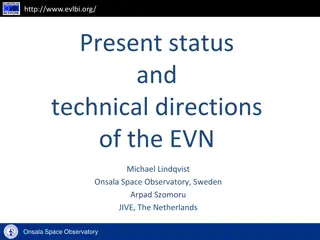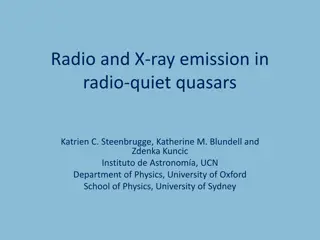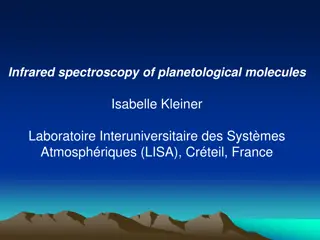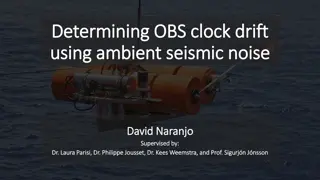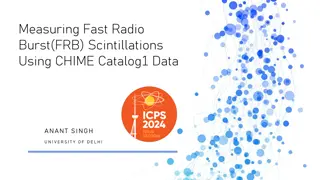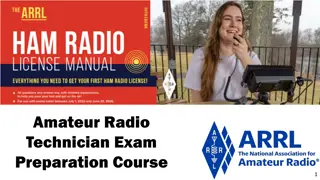Planetary Radio Interferometry and Doppler Experiment (PRIDE) Analysis
Investigate the scintillation of radio signals from VEX and MEX in interplanetary and ionospheric plasma. Explore data processing, target missions, and spacecraft interactions through PRIDE. Analyze orbital perturbations, atmospheric drag campaigns, and gravity coefficients. Collaborate with VLBI networks and tracking stations for celestial body studies.
Download Presentation

Please find below an Image/Link to download the presentation.
The content on the website is provided AS IS for your information and personal use only. It may not be sold, licensed, or shared on other websites without obtaining consent from the author. Download presentation by click this link. If you encounter any issues during the download, it is possible that the publisher has removed the file from their server.
E N D
Presentation Transcript
* Planetary Radio Interferometry and Doppler Experiment (PRIDE): Scintillation of VEX and MEX radio signal on interplanetary and ionosphere plasma G. Molera Calv s 1,2 e-mail: molera@jive.nl On behalf of the PRIDE team 1 Joint Institute for VLBI in Europe, the Netherlands 2 Aalto University Mets hovi radio observatory, Finland
*Planetary Radio Interferometry and Doppler Experiment (PRIDE) Celestial body target VLBI network and 2-way tracking stations Spacecraft Background sources 2 EVN symposium - Cagliari 26/2/2025
*Block-diagram of data processing and analysis Raw observational data Reference Source coordinates A priori state vectors of the S/C Broad-band correlation of the quasar with the far- field delay model Broad-band correlation of the S/C data band with the near-field delay model Narrow-band correlation of the S/C carrier and ranging tones with the near-field delay model Residual group delay and phase Residual group delay and phase Residual phases of the carrier and ranging tones Delay/phase corrections Group and phase delay of the S/C signal with resolved 2 ambiguity Reconstruction of the apparent state vectors of the S/C 3 EVN symposium - Cagliari 26/2/2025
*Our targets Prospective PRIDE missions Current PRIDE missions ESA-JAXA Bepicolombo 2015 ESA ExoMars 2016 ESA MarcoPolo-R 2020 RSA Venera-D 2024 ESA Venus Express (VEX) ESA Mars Express (MEX) GLONASS satellites Radio Astron Space VLBI GAIA telescope ESA Jupiter Icy Europa (JUICE)
*2.1 Phobos fly-by: MEX tracking * MEX approached Phobos at only 58 km on Dec 29, 2013. * 31 stations tracked for 24 hours 3 orbits at Mars. * Combined Australian/Asiatic + EVN + VLBA * Precise reconstruction of MEX orbital perturbations is currently in process. * The gravity coefficient C2,0 will be determined by a least square fit of spacecraft dynamical model to the PRIDE tracking data. Credit: ESA/DLR/FU Berlin (G. Neukum). Phobos gravity off Phobos gravity on 5 EVN symposium - Cagliari 26/2/2025
*2.2 VEX atmospheric drag campaign * VEX was lowered to enter the atmosphere of Venus. * 12 radio telescopes participated in the Venus Express Atmospheric Drag Experiment (VExADE) (Dec 2012, May 2013 & June 2014). * The atmospheric drag was at a level of 40 mHz in Doppler frequency or 1.5 mm/s velocity reduction. Day 12 Day 1 6 EVN symposium - Cagliari 26/2/2025
*2.3 Radio occultation with VEX and MEX * VLBI Doppler is also suitable for radio occultation, due to its sensitivity to signal path deviations perpendicular to the line of sight. * Several experiments have been conducted in parallel to Phobos fly-by or drag campaign experiments. * VEX 3-telescopes March 2014 (Bd,Sv,Zc). * MEX (S/X)-band with Wk on 05/06 2014. * T. Bocanegra (TU Delft) is working on the code to process the data. 7 EVN symposium - Cagliari 26/2/2025
*3. Interplanetary scintillation study * Phase scintillation of VEX telemetry signal has been observed with EVN telescopes since 2009. * 5 years of observations 340 observations * Currently up to 5 sessions per week (Many thanks to Ht, Kvazar, Ww, Mh, W) * Phase fluctuations of the carrier line are used to characterize the IPS fluctuations. (Molera Calves, A&A, 2014; Molera Calves, PSS, 2014) 8 EVN symposium - Cagliari 26/2/2025
(Molera Calves, A&A, 2014; Molera Calves, PSS, 2014) *Analysis results for VEX 9 EVN symposium - Cagliari 26/2/2025
*Analysis results for MEX 10 EVN symposium - Cagliari 26/2/2025
*3.1 IPS with EVN and LOFAR combined observations *Classical IPS studies have used the amplitude fluctuations from the flux density emitted by bright sources to determine the scintillation index. *Combined effort of EISCAT + LOFAR + VLBI for discerning the origin of scintillation. *16.06.14 Cassopeia A was angularly close to VEX. *Station: Zc, Sv, Ys, Wz, Ht, On 11 EVN symposium - Cagliari 26/2/2025
* PRIDE team has demonstrated the accuracy of the VLBI phase- referencing method for tracking spacecraft in a number of occasions (VEX and Radio Astron). * PRIDE is a free contribution to any space mission * Current ongoing research focuses on : * Characterize the atmospheric and ionospheric structure of planets and interplanetary media. * Phobos fly-by tracking, Venus drag campaign and radio occultation * Orbit determination of radio astron. * ESA s JUICE mission includes PRIDE in their scientific package. *Tracking observations of VEX and MEX will continue in order to improve our scintillation measurements *Summary 12 EVN symposium - Cagliari 26/2/2025
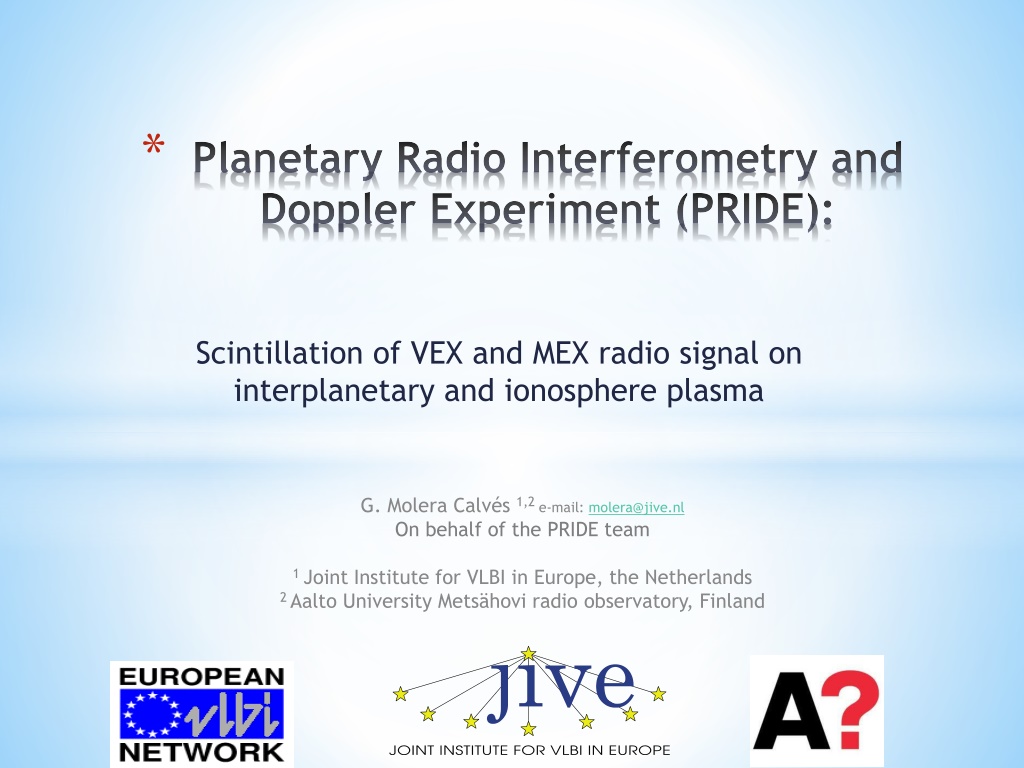
 undefined
undefined
















